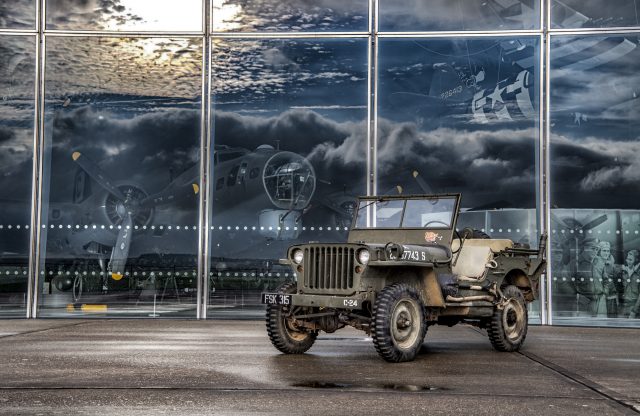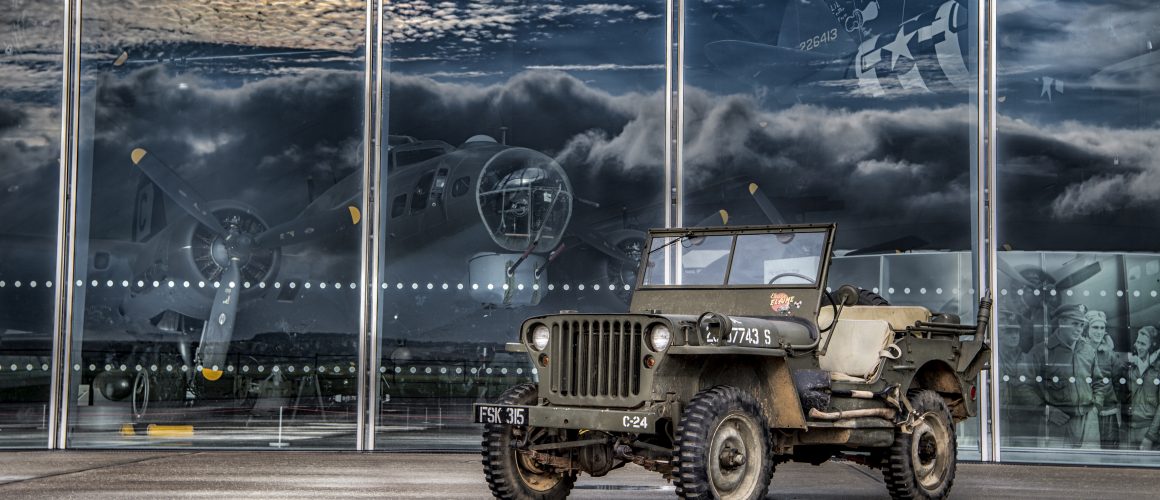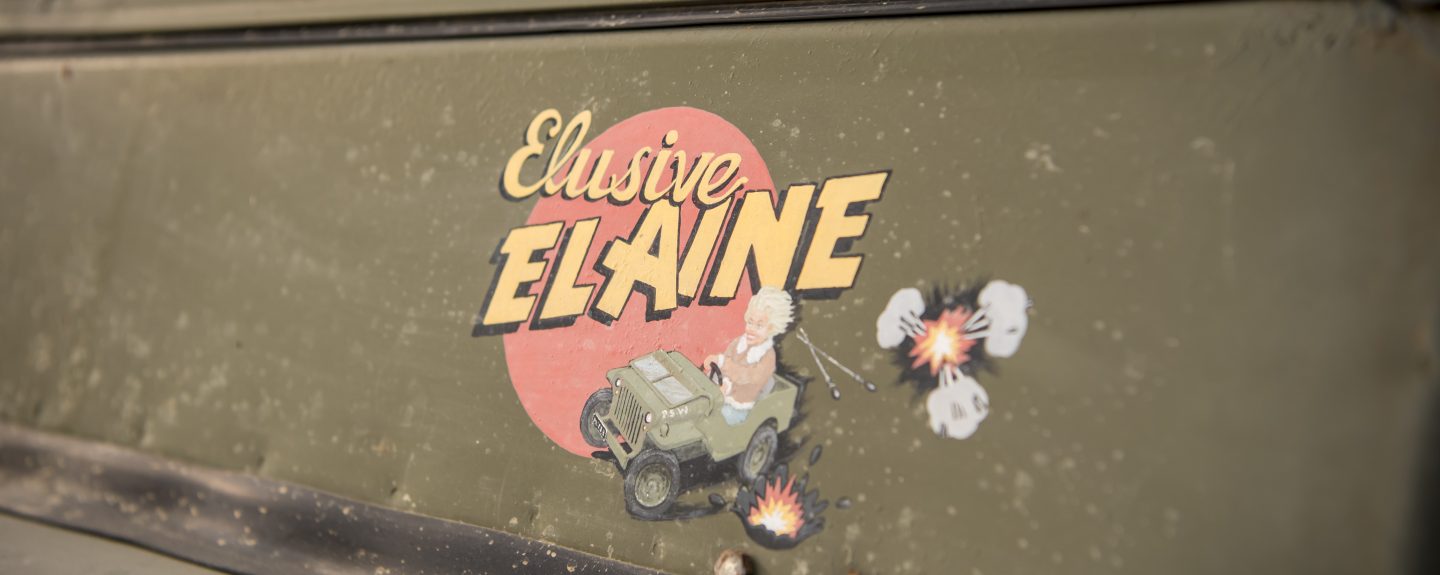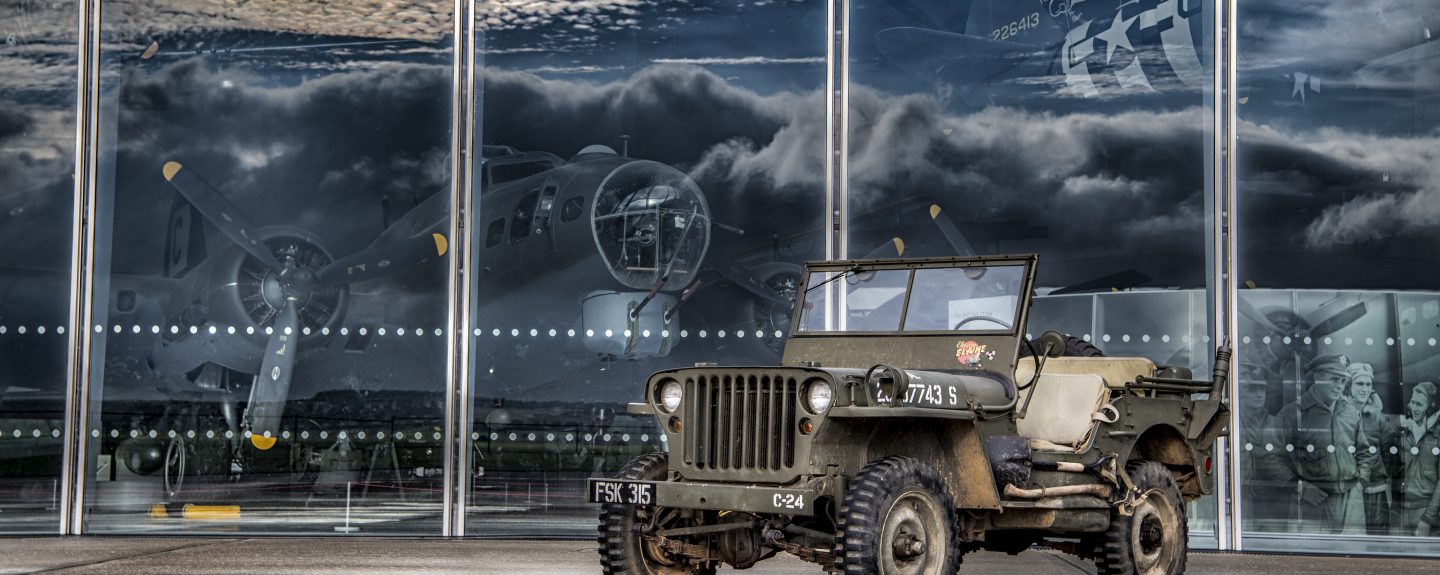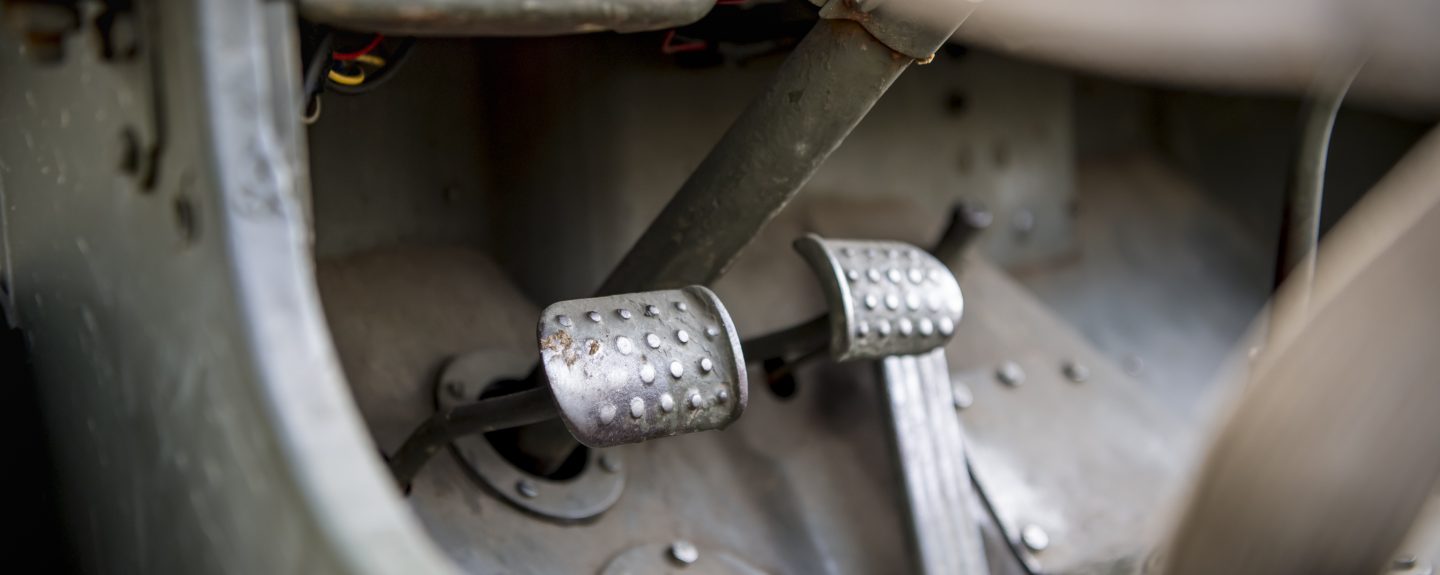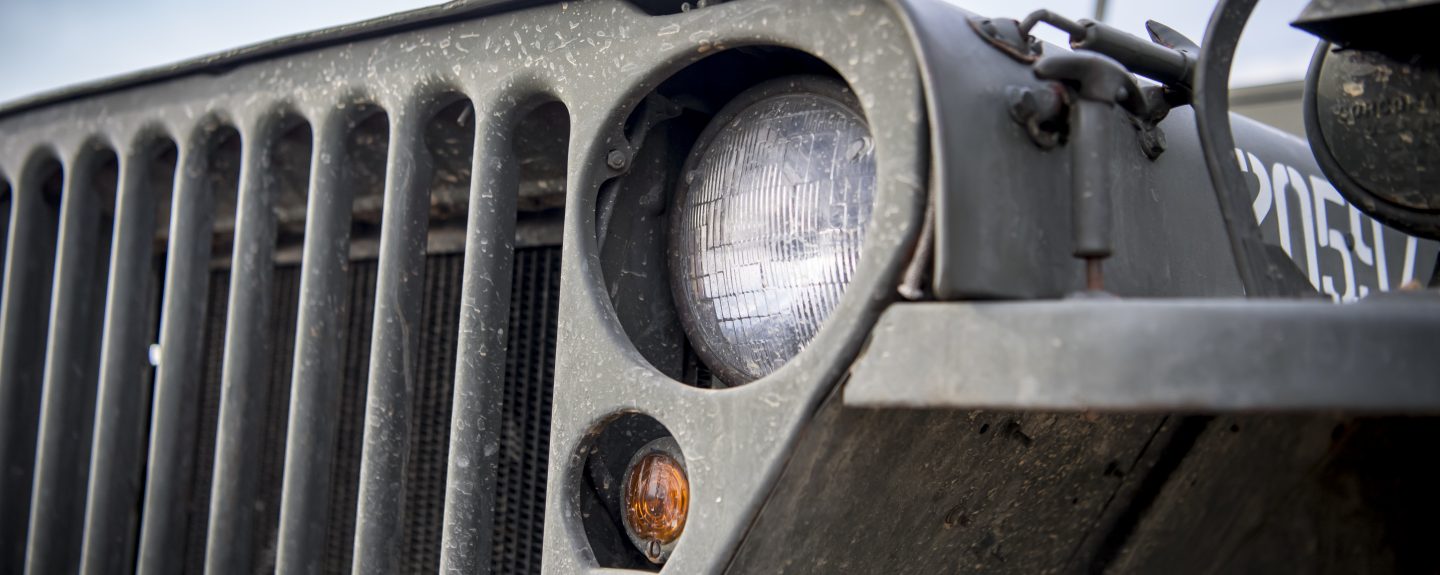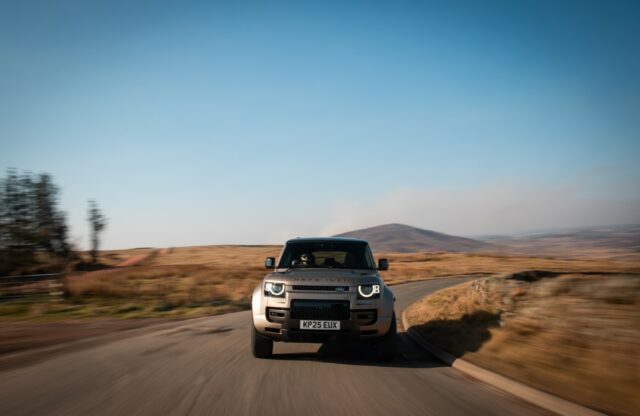WORDS: ELLIOTT HUGHES | PHOTOGRAPHY: andy morgan
A blend of curiosity and excitement plus a smattering of trepidation often precede the experience of driving a car from the 1940s. Unintuitive controls, intransigent gearboxes, perilous brakes and steering with the feel and precision of a spinning teacup ride are common themes.
So, after being invited by Jeep to drive an original ‘40s Willys MB at Duxford Airfield for the launch of the 80th anniversary Jeep Wrangler, I mentally prepared myself to look very foolish and have my failings as a driver captured by the photographer for all and sundry. I couldn’t have been more wrong. The Willys Jeep isn’t just easy to drive, it’s also an honour and an experience you’ll never forget.
But that doesn’t mean there aren’t a few things to get used to. Grip the top of the windscreen, hoist yourself into the driver’s seat and splay your legs either side of the gigantic steering wheel. Then, hook a canvas chord across where the door should be, so you don’t take a tumble while cornering.
Once inside, modern-car muscle memory takes over. You reach over your left shoulder for the seatbelt and then laugh at yourself for assuming it’s there. Reach down to adjust the seat – laugh at yourself again and adjust your expectations instead.
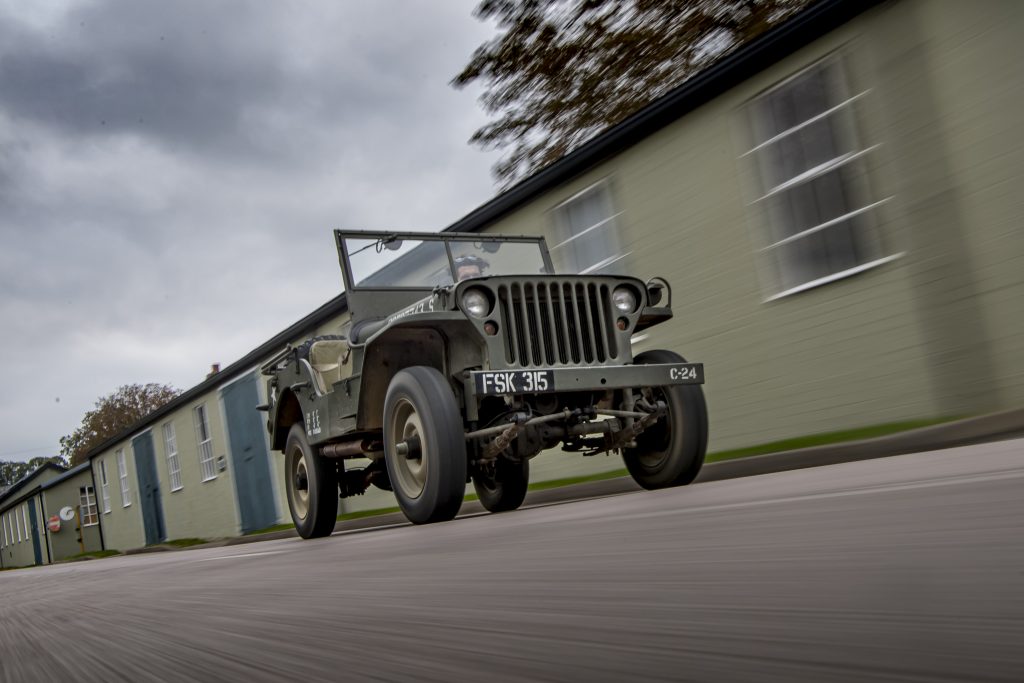
Time to start the Willys’ 60bhp L134 ‘Go Devil’ four-cylinder engine. At this point, the absence of a traditional twist-key starter is less of a surprise. Even so, only the most knowledgeable of thieves would be able to steal this car; the starter is a button hidden on the floor to the right of the accelerator.
There’s also a choke, but luckily the Jeep is already warmed up, so no need to worry about that. Press the starter with your toe and blip the throttle with your heel, and the engine bursts into life – not the sort of heel-and-toe footwork that most are familiar with.
The knobbly brake and clutch pedals are wide and resemble hand-shovel blades; ideal for a GI’s muddy boots, and – for someone with size 11 feet – a welcome departure from the usual teaspoon-esque pedals found in old cars.
Mash the clutch into the footwell, grab the spindly gearlever and remember it’s a three-speed dogleg ‘box – first is down and to the left. And then you’re away, bouncing down Duxford’s taxiways, flanked by hangars and legendary period aircraft. Experiencing the bounciness of ride first-hand brings to life monochromatic footage of US soldiers bobbing in their seats. The brakes are expectedly spongy, but easy enough to adapt to.
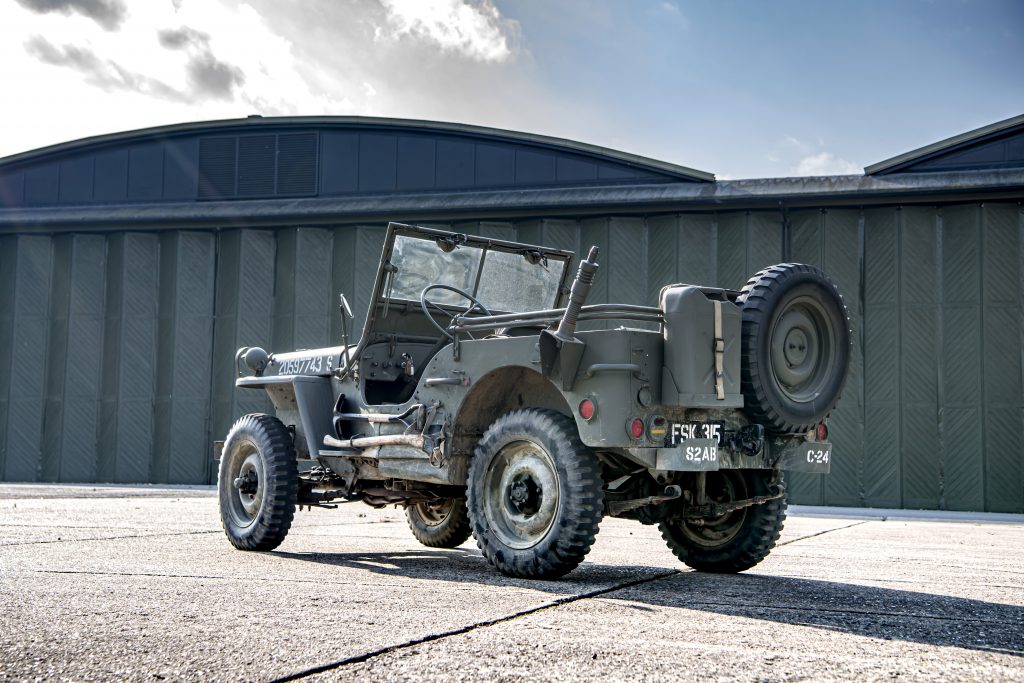
The feeling of exposure is also something that strikes a chord. While it’s pleasant to have the wind rushing through your hair and around your torso in the serenity of peacetime, such openness to the elements while being shot at seems incomprehensible; especially when the driver’s seat is essentially a cushion fastened to the fuel tank.
But the merciful lack of enemy gunfire also demonstrates how important the now legendary Willys Jeep became once it helped the Allies vanquish the Axis threat. Its charm, practicality and usability inspired an entirely new taxonomy of vehicles that are as popular today as ever; from the humble Land Rover to the somewhat superfluous Rolls-Royce Cullinan, all salute the 600,000 Willys Jeeps that trailblazed their way through the theatres of battle.
Get more information on the Jeep Wrangler 80th Anniversary edition and Willys Jeep here.
If you liked this, then why not subscribe to Magneto magazine today?
